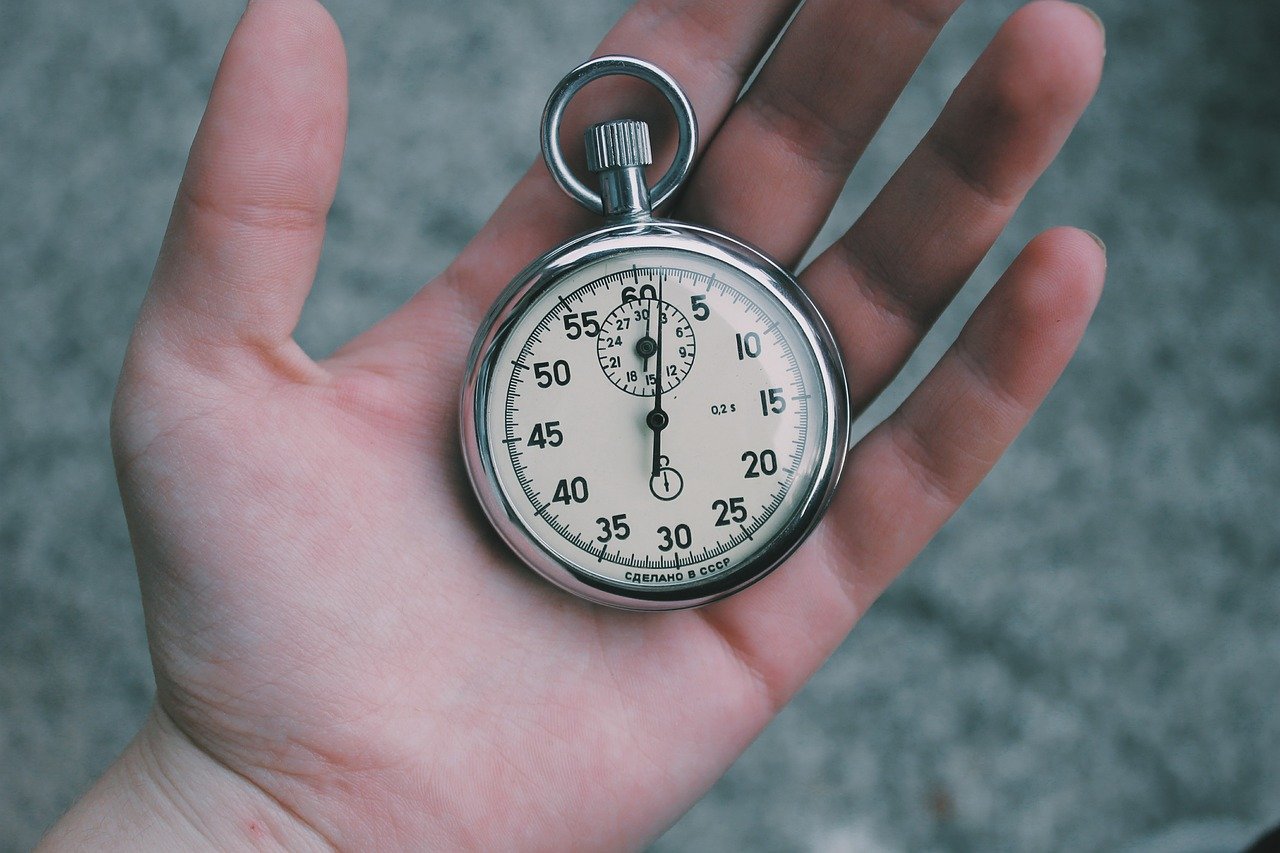15 Crucial Call Center Metrics and KPIs You Need to Know

The success of your call center depends on the list of key performance indicators (KPIs) you follow. If you know what your performance metrics are, you know how well you’re doing. Without call center KPI tracking, you’ll never know if you’re running your call center effectively.
While there are a lot of different kinds of call center metrics, these 15 KPIs are the most crucial to monitor. Make sure you track and optimize them to ensure you run your call center successfully.
What Is a Call Center KPI?
A key performance indicator (KPI) in a call center is a number that measures the performance of an agent, department, or method. It’s the numerical way to confirm your success.
Below, you’ll see a list of important call center metrics you need to know about and track. Ideally, you should set a call center KPI goal you and your team can work towards. Compare your performance to accurately gauge how well your call center is performing.
Inbound Call Center KPIs
Inbound calls are when customers call into the call center. These are very important because they often require problem resolution from agents.
And tracking how well these calls go lets you know how well your call center does overall. Here are the most crucial inbound call center KPIs, so you know what to track.
1. Total Calls Handled
You need to know the historical data of how many calls you handle and the times. With this data, you can see the historical spikes in calls. This call center KPI will also help you prepare and schedule your agents.
The best way to track total calls handled is to create a spreadsheet. The columns should show one-hour intervals, and the rows represent the days. After you create this, tally how many calls are received in each cell. It will be easy to see how your call center metrics fluctuate.
2. Average Handle Time
The average handle time is the best call center KPI to gauge how efficient your process is. This is the whole time your rep spends on the interaction. From the time they pick up the call until they finish their after-call work. As a result, the average handle time includes talk time, hold time, and after-call work as well.
If your talk time is low, but your average handle time is high, the after-call work is probably too inefficient. Knowing how well your call center is performing with this KPI isn’t just good for efficiency, it can also improve your rep’s work life.
3. Talk Time
Talk time is the time an agent spends talking to a customer. While this is crucial to know, optimizing talk time isn’t a good choice most of the time. Why? Because if the agent needs to rush a call to meet a certain KPI, they won’t perform quality work.
This is a prime example of how customer satisfaction should always come before call center KPIs.
4. After Call Work
This is part of the average handle time as well. Otherwise known as wrap time, this is the time your reps spend on finishing the customer service work after the call is done. They may need to update an account, send a memo, or request a change.
You have to understand your after-call work and use it to your advantage. Don’t tell agents they only have 5 seconds for after-call work. Instead, give them time to finish, breathe, and recalibrate for the next call.
While this call center KPI is easy to adjust, it may affect the happiness of your agents if you put too much pressure on them.

5. Average Speed of Answer
As part of your service level, you need to know how long customers are in the queue. The average speed of answer (ASA) is the average time from when the call is started in the queue until your agent picks up.
The industry standard for service level is 80/30, where 80% of the calls are answered in 30 seconds or less. The quicker you need to answer, the more people you need on the floor to answer those calls. This is crucial. Your call center’s reputation depends on how well you perform at this call center KPI.
6. Longest Delay
While the average speed of answer is a crucial call center KPI to keep track of, we can’t forget the longest delay either. This is the number of the longest waiting period a customer experienced before an agent picked up the call.
If you keep the 80/30 industry standard, this shouldn’t be much more either. But if you see that there’s one call that took 6 mins 32 seconds to answer, something’s definitely wrong. You need to adjust your staffing and have more agents on the floor if you see numbers like that.
7. Occupancy
If you are overworking your agents, you run the risk of burning them out. And then you’ll have serious problems in your contact center.
Your occupancy tells you how efficient your agents are. To calculate this rate, divide your handle time by the total time an agent is logged in. For benchmarking purposes, we want our occupancy rate around 75-80%, meaning our agents are actively working around 45 minutes of every hour.
8. Call Back Percentage
Most of our clients like to offer virtual callbacks to their customers. If a customer gets caught in the queue during a spike, instead of waiting, they’re offered a callback. They don’t lose their spot in line, and they don’t have to sit on hold wasting their day.
We track how many customers opt into that offer. We also track how many callbacks get abandoned because no one answers when we return the call. Callbacks are a great way to boost your customer satisfaction KPIs.
9. Self-Service Usage
Interactive voice response (IVR) systems are a lifesaver at a call center. They can hand out information and record details without an agent. And you can track how well these IVRs do by counting how many calls need to be transferred to real people to solve.
At Expivia, we track this to let us know if our IVR is maybe set up incorrectly or isn’t as helpful as it could be.

10. Shrinkage
Your shrinkage will dictate how many extra staffers you need for each interval. At Expivia, we generally schedule with 10% shrinkage.
We know through tracking intervals that we need 20 people on staff at 9:00 AM. As a result, we schedule two extra people. This gives us a buffer to help keep us covered when any time a staff member leaves the floor.
Outbound Call Center KPIs
Unlike inbound calls, outbound calls are initiated by the agents. They call customers with offers and promotions. So, the KPIs you need to track if you have an outbound call center are completely different than inbound call centers.
11. Sales
When looking at outbound calls, these KPIs are less about customer care and more about sales metrics. Most importantly, you need to track how many successful sales go through in your call center.
The best way to track this is to see how many sales you complete in hour-long intervals. This way, you can compare your reps and programs effectively. At Expivia, we look at sales per hour. Alternatively, if we are trying to collect a payment, we watch the method of payment per hour.
12. Dials Per Dialing Method
Whether you are using a predictive dialer or a power dial, you need to track the number of dials per hour. Make sure you have that benchmarked for your organization. That must be an attainable goal, and your reps need to adhere to it.
13. Abandonment Rate
When you’re using a predictive dialer that dials more than one line at a time, you need to look out for the abandonment rate. As phones are answered, your dialer will give those calls to your agents. Those leftovers get abandoned.
Please be aware of the Telephone Consumer Protection Act (TCPA) regulations state that your abandonment rate must be under 3%.
13. Number Contact and Connects
Make sure you know the difference between contacts and connections and track them both. Contacts happen when you successfully get through to a prospect. In short, someone picked up the phone and said hello. (Except, it may not be the right person.)
Connects are even more important to track. If you are trying to reach Jane Smith, and you actually speak to her, that is a connection.
14. Conversion
Connects can roll into a conversion. They can be qualified or unqualified.
Unqualified is the sales that we get from connects out of all the calls that we are dialing. You can qualify them off of the total. However, this will really only tell you if the file you are working with is any good.
Connect and conversion numbers will tell you if an agent can sell or not. If an agent got one “yes” and nine people said “no”, that agent has a 10% conversion rate that day.
All agents can get lucky for a couple of hours. But, their long-term conversion rate will show their real talents.

Call Center KPIs to Measure Customer Service
A lot of call centers measure the wrong KPIs. They want to know the numbers of calls, sales, and times. But, they don’t pay enough attention to customer service itself. Measuring the customer and the associate’s performance is a lot more important for the overall good of the call center.
15. Net Promoter Score
How likely is it that your customer would recommend your company or product to a friend or colleague? Net promoter score (NPS) is the percentage of customers rating their likelihood to recommend your call center’s services. Although the NPS isn’t a common call center KPI, it really should be.
It’s the best way to track how well your customer service performs. And there’s no way to successfully raise your net promoter score without actually improving customer satisfaction.
This can range from the quality of your IVR to the wellbeing (and therefore mood) of your agents. The NPS of your call center lets you know how well it’s performing overall.
Do Call Center KPIs Matter?
Call center KPIs let you know how well you’re doing. So, it’s safe to say that all center metrics and KPIs are important. But, they aren’t enough to judge if your customers are having a good experience. Make sure you’re constantly improving on the customer experience, rather than focusing solely on the metrics.
How to Improve Customer Experience and Call Center KPIs?
There are two ways to improve both customer service, and your overall performance:
- Embrace New Call Center KPIs: Some call center KPIs are ancient. They don’t accurately portray your performance. And just because they’re traditional, doesn’t mean they’re helpful. Welcome new ways to measure your performance instead.
- Invest in Speech Analytics Software: With today’s technology, we can do more than hit a timer and count the calls. We can now listen to everything the customer says and analyze it in real-time: measuring tone and sentiment. This data is the most reliable at measuring customer service.
Which KPIs Do You Think Are Most Crucial?
Did you learn of any new KPIs you’re going to try?
Or do you track a KPI we didn’t talk about here?
Leave your questions and ideas in the comments!




Pingback: How to Set Up a Virtual Work From Home Call Center | Expivia
Pingback: Is Good Customer Service Dead? Here's How You Can Save It | Expivia
Pingback: 10 Steps for the Best Call Center Coaching Session | Expivia
Pingback: Advanced Call Center Technologies: Trends and Best Practices | Expivia
Pingback: Speech Analytics - Expivia | USA Based Call Center
Pingback: 10 Unique Benefits of Speech Analytics in a Call Center | Expivia
Pingback: What Is an Omnichannel Contact Center? | Expivia
Pingback: Top 5 Call Center Reporting Methods to Follow | Expivia